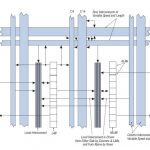FPGA devices are a great way to drive silicon technology development because they contain both digital and analog IP, along with sophisticated IO cells. The highest performance IOs are transceivers, and Altera has recently designed the Arria 10 device family to include up to 96 transceivers, using a 20nm technology that can achieve… Read More
Tag: altera
Transistor-level Sizing Optimization
RTL designers know that their code gets transformed into gates and cells by using a logic synthesis tool, however these gates and cells are further comprised of transistors and sometimes you really need to optimize the transistor sizing to reach power, performance and area goals. I’ve done transistor-level IC design before,… Read More
New details on Altera network-on-FPGA
Advantages to using NoCs in SoC design are well documented: reduced routing congestion, better performance than crossbars, improved optimization and reuse of IP, strategies for system power management, and so on. What happens when NoCs move into FPGAs, or more accurately the SoC variant combining ARM cores with programmable… Read More
Xilinx UltraScale gives you 25% more packing than you know who…
Coke with no ice. You see I am not cheap, or even frugal but a good steward. One of the things that I hate the most is waste. You know lights on in every room, door open during winter and driving 25 miles to save a dollar on gas.
One will notice fairly quickly that with Xilinx UltraScale 20nm FPGAs coupled with the new-fangled analytical … Read More
Xilinx, 100 Reasons to use them
We all like compliments, correct? You know the kind that go like, “Glad you didn’t screw that up”. From time to time I get, “You write what you do because you’re affiliated with Xilinx”. Perhaps I will name my next child Xilinx. I have said this before, I do real work (debatable) and trade studies,… Read More
Altera vs Xilinx FinFET Update
One of the things I do in my spare time is listen to quarterly conference calls and try to sort fact from fiction. I compare past calls to the current one and attempt to predict what’s coming next. Confucius said, “Study the past if you would define the future” and I’m a big believer in that.
Paul McLellan wrote about the Xilinx call earlier… Read More
Fantasy Tech-Ball and the Intel Rumor Wire
Reading Intel analysis lately has been a lot like reading fantasy baseball analysis. Intel should buy Altera. Intel should waive Atom. Intel should fab for Apple. All of those have a near-zero probability of happening IMHO, and yet pundits continue to pitch their version of alternate reality, dealing away product lines and strategies… Read More
Xilinx has the Power Advantage over Altera
I thought I write about one of the most important subjects in FPGAs, that is power. Power of course is not just based on node size, and it is funny why so many people are concerned about node size. If not just as important is the architectural decisions that drive down power. Do you really care if your part is 16nm or 14nm? Or do you care more… Read More
Xilinx’s 16nm vs. Altera 14nm
You will not believe this, but the family was picking me up Friday evening from the airport and on the way home… Get this, for real, the wife asks me to cut her hair tomorrow. Now the three of you that read my stuff, know what happened before. I resisted, and firmly said ‘No’…The wife seeing my macho stance began appealing to my engineer’s… Read More
Xilinx Quarterly Results: 20nm Prototypes
Xilinx announced their quarterly results last week. Because of their financial year not being aligned with their calendar year this is actually 4th quarter of their 2014 financial year. New Year’s Eve 2015 comes early for Xilinx. The results were very good. As Moshe Gavrielov, the CEO, said on the conference call:Xilinx… Read More


